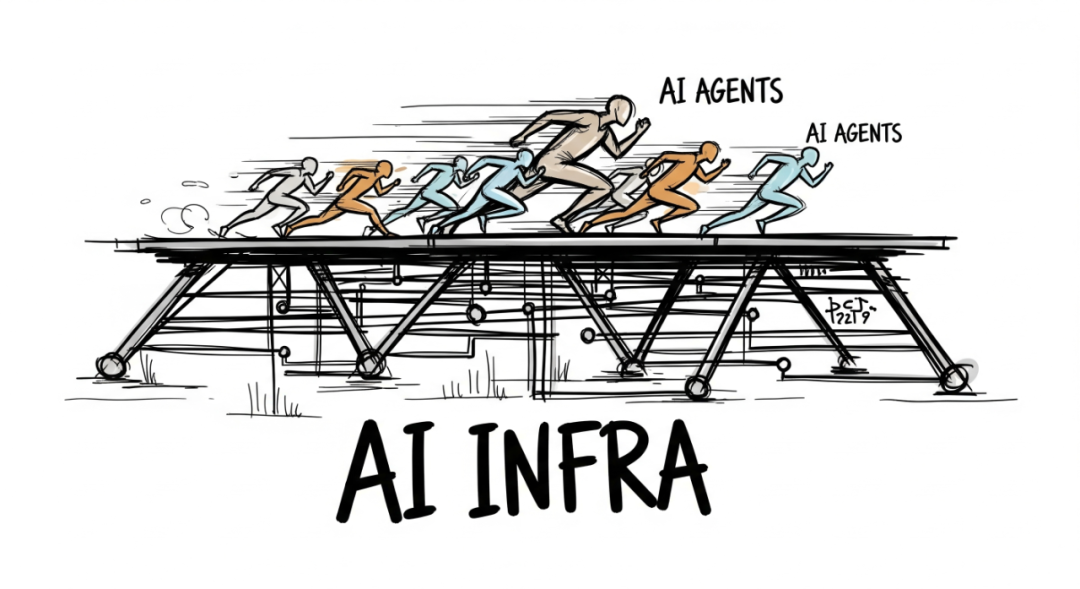The era of AI Agents has arrived. Companies are launching 'intelligent assistants' and 'digital employees,' promising disruptive, human-like interaction. But behind the hype, many AI projects are failing to deliver real business value. Why? The answer isn't in the AI models themselves.

The real story is about the foundation they're built on. AI infrastructure is the endgame hiding in plain sight.
We're caught in a paradox: the focus on making AI 'smarter' often neglects the very systems that allow it to learn and evolve. While large models are powerful, the true revolution lies in building a seamless data-to-AI pipeline. This robust AI infrastructure is the real engine of productivity and the key to successful AI implementation.
Common AI Challenges: Why Legacy Infrastructure Fails
If your AI initiatives feel stuck, they are likely built on a broken foundation. Legacy systems weren't designed for the unique demands of modern AI, leading to common challenges that stall progress.
Data Silos
Critical data is often trapped in disconnected business systems. This makes a unified view for training comprehensive AI models impossible.
Poor Data Quality
The adage 'garbage in, garbage out' is critical for AI. Noisy, inconsistent, or poorly labeled data leads to unreliable and poorly performing AI models.
Data Lag and Latency
Next-day (T+1) data processing is too slow. Modern AI applications require real-time data to make intelligent, in-the-moment decisions and predictions.
Compute Bottlenecks
Scarce GPU resources and inefficient scheduling create frustrating delays. These bottlenecks stall both large-scale model training and real-time inference, slowing down the entire development lifecycle.
Without solving these core AI infrastructure problems, any talk of 'intelligent transformation' remains an empty promise.
What is AI Infrastructure? A Complete Definition
At its core, AI infrastructure is the complete set of technologies, systems, and processes that transforms raw data into a dynamic, strategic asset for AI applications. Its primary job is to create a seamless and efficient data-to-AI pipeline that handles four key stages:
- Data Ingestion and Governance: This involves collecting data from various sources and ensuring its quality, reliability, and security right from the start.
- Feature Engineering and Management: Raw data is translated into structured 'features'—the language that AI models understand and learn from. This stage is critical for model performance.
- Model Training and Deployment: This provides an efficient, stable, and automated production line for building, validating, and deploying AI models into production environments.
- Real-time Inference and Serving: Once deployed, the infrastructure enables AI models to respond instantly to new data, delivering predictions and business value on demand.
Think of it this way: if data is raw fuel and AI models are high-performance engines, then AI infrastructure is the entire refinery, pipeline, and delivery network required to get the right fuel to the right engine at the right time. Without it, you just have powerful engines going nowhere.
Key Players in the AI Infrastructure Market
Building a modern AI infrastructure isn't about buying a single product. The market is a complex ecosystem of players, each addressing different parts of the data-to-AI pipeline.
Cloud Providers (AWS, Google Cloud, Azure)
These giants offer immense, scalable computing power and a broad suite of services. However, they often encourage lock-in to their proprietary ecosystems.
Data-Centric Platforms (Databricks, Snowflake)
These companies have a deep understanding of data management and processing. Their native AI and modeling toolchains are rapidly maturing, making them strong contenders.
AI Platform Specialists (C3.ai, DataRobot)
These platforms excel at the model development and deployment lifecycle (MLOps). However, they may treat the underlying data engineering as a secondary concern.
Open-Source Ecosystems (Hugging Face, MLflow)
Open-source tools provide unparalleled flexibility and community-driven innovation. The trade-off is that they require significant in-house expertise to integrate, manage, and maintain.
The ultimate winner will be the solution that masters the entire 'Data-to-AI' pipeline and applies it to solve tangible business problems.
The Future is Built on AI Infrastructure
While the world is mesmerized by the capabilities of AI agents, true visionaries are focused on laying the pipes. They understand a fundamental truth: AI infrastructure is not just a technical prerequisite, but the strategic foundation for the next era of computing.
For any organization pursuing intelligent transformation, the path forward is clear. The ability to build, manage, and scale a robust AI infrastructure will determine who successfully rides the AI wave. The real boom isn't in the models themselves, but in the foundational systems that give them power.
Key Takeaways
• Assess and improve your AI infrastructure to enhance project outcomes.
• Address data silos and lag to unlock AI's full potential.
• Focus on building a robust foundation for successful AI implementation.